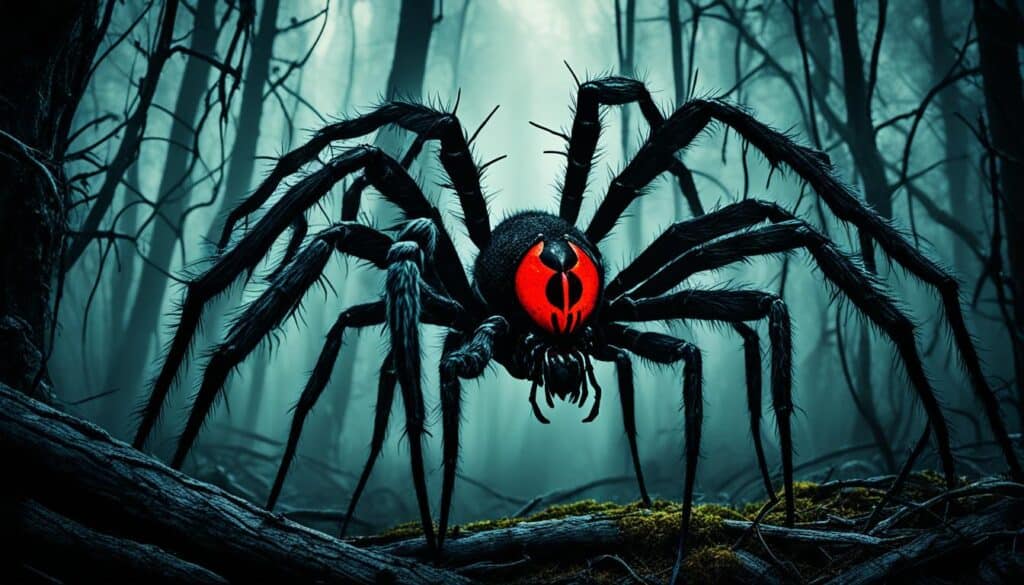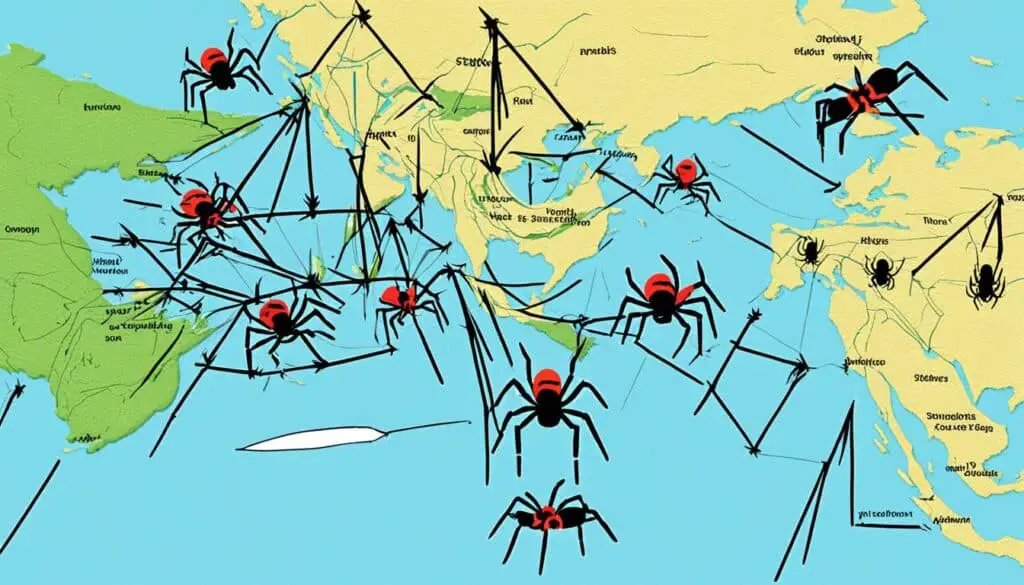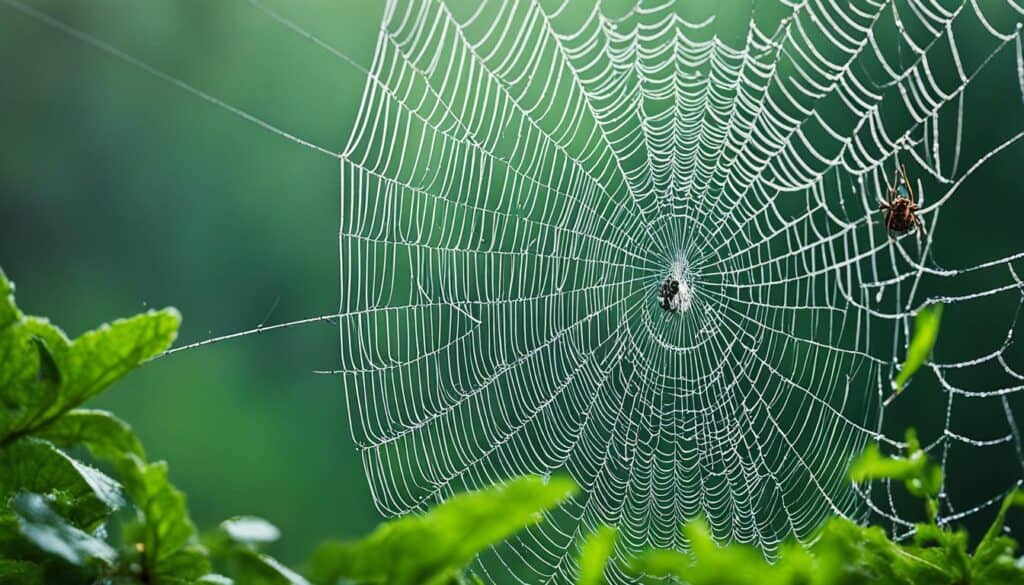Did you know the Joro spider from East Asia has legs up to four inches wide? That’s huge! These big spiders have made the U.S. East Coast their new home. They started in Atlanta and now live from the Carolinas to Baltimore. They “balloon” to travel, using wind and electromagnetic fields to move up to 100 miles. But, their venom is harmless to people and pets.
Professor David Coyle, an invasive species expert at Clemson University, has seen their numbers grow. They fit right into the East Coast’s humid forests, just like in Japan. Their bright yellow and black colors make them easy to spot. This intrigues and scares many people living on the East Coast.
Key Takeaways
- Joro spiders can grow up to four inches long.
- Their venom is non-lethal to humans and pets.
- Young Joro spiders use “ballooning” to travel up to 100 miles.
- Primarily found in Atlanta, they’ve expanded to the Carolinas, Tennessee, and Baltimore.
- Professor David Coyle highlights their adaptability to humid environments.
- Sightings of these large, yellow and black spiders are becoming more common.
- Despite their intimidating size, Joro spiders contribute minimal health risks to people.
Introduction to the Joro Spider Invasion
Imagine your backyard looking like a scene from “Invasion of the Web Snatchers” one morning. That’s what’s happening from Georgia to Oklahoma because of the Joro spider introduction. Huge webs are everywhere, making “creepy-crawlies” feel like an understatement.
The Joro spiders arrived in Georgia around 2014, no one knows how. They quickly spread, reaching the Carolinas, Tennessee, and Maryland. It’s an invasive species phenomenon like we’ve never seen. Despite this, adult Joros are mostly tiny, about the size of a grain of rice, during certain times of the year.
Joro spiders may look scary, but they’re quite shy. Experts like Professor David Coyle say if threatened, they freeze for over an hour. So, rather than trying to get rid of them, we should learn to live with them. Yes, we’re talking about befriending these eight-legged creatures.
But it’s not just a simple matter of making nice with spiders. There are real public health concerns to consider. Although the Joro’s venom is harmless to humans, like a mosquito bite, the way they spread is concerning. Their spiderlings take to the air and spread everywhere, making Joro spider colonization quite easy.
This way of moving around also shows how they adapt to the environment, especially with climate change. Warmer temperatures on the East Coast have welcomed them. And they’re thriving in places like South Carolina. Yet, their spread might harm native species and disrupt our ecosystems.
To really understand the Joro spiders, we need to be ready, adapt, and maybe even admire them a little. Their network stretches from Georgia to Maryland, and it’s still growing. The Joro spider invasion is an unfolding story.
How Joro Spiders Spread: From East Asia to the East Coast
Let’s dive into the adventure of Joro spiders, or Trichonephila clavata. These critters come from East Asia, including Japan and Korea. They didn’t catch a flight here. Instead, they flew on the wind, using silk like parachutes.
These spiders landed in the U.S. about ten years ago, first arriving in Georgia in 2014. Now, they’ve traveled to states like Maryland and Alabama. That’s quite the journey from across the world!
However, not all Joro spiders enjoy the sky ride. Baby Joro spiders can float in the air, but the adults stay on the ground. Basically, the tiny ones can fly, but the big ones prefer staying put.
Researchers at Clemson University found out something interesting. Joro spiders thrive in humid forests, much like their native lands. Their love for moisture helped them settle into the East Coast. They’ve now spread across several states, including Tennessee.
The spread of these spiders raises some concerns. They might outcompete the locals but also help control pests. They’re venomous, but not harmful to humans. Their bite is like a mosquito’s—annoying but not dangerous.
The story of the Joro spider is far from over. They weave golden webs that can be 10 feet long. It’s another fascinating chapter in nature’s book. -p>
The Joro Spider’s Impact on Local Ecosystems
Joro spiders arrived on the East Coast and got everyone talking. These spiders are big, with females reaching up to 1.5 inches. They came from East Asia to Georgia in 2014. Since then, they’ve spread across the southeast, making their mark.
Now, let’s discuss their ecological impact. Though venomous, Joro spiders aren’t a huge threat to humans. They’ve increased competition for food and space among spiders. They eat a lot, from insects to pests like the stink bug. It’s like they’re at an all-you-can-eat buffet.
But this eating frenzy might be affecting biodiversity. Joro spiders could be changing ecosystems. With their growing numbers, it’s a concern. Researchers, like those at Clemson University, are watching what happens next.
However, Joro spiders have a good side. They’re feeding native birds, offering something new to the menu. So, they might not be all bad for ecosystems. The long-term effects are still being studied. Scientists want to know if they’ll be helpful or harmful overall.
Understanding the Timeline of Joro Spider Invasion
The invasion of the Joro spider in Georgia is quite a story. These big spiders, with leg spans of 3 to 4 inches, appeared around 2013 to 2014. They have now been found in almost 25 counties.
Joro spiders spread through a unique way called “ballooning.” This method lets them travel on the wind for miles. Some even arrived here on cargo ships.
These spiders are seen mostly in September and October. Their life cycle makes them a common sight all year, with more sightings in late summer. The spider population in northern Georgia is growing fast.
Experts say these spiders could spread further north over time. It’s still unclear if their arrival is bad for our environment or just a nuisance. Companies like Lookout Pest Control, with 30 years in the business, are ready to help. It’s comforting to know there’s expert help available. For more information, visit this helpful guide.




